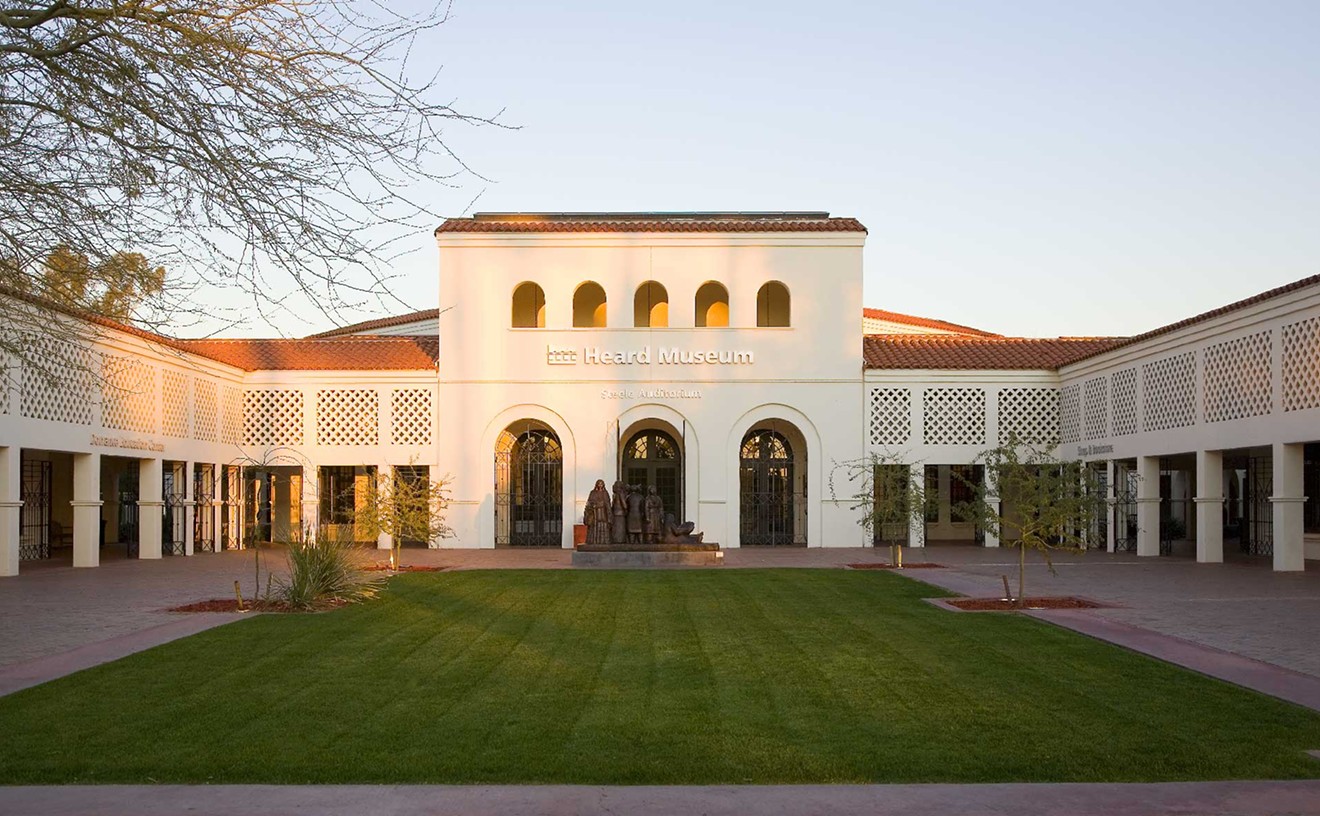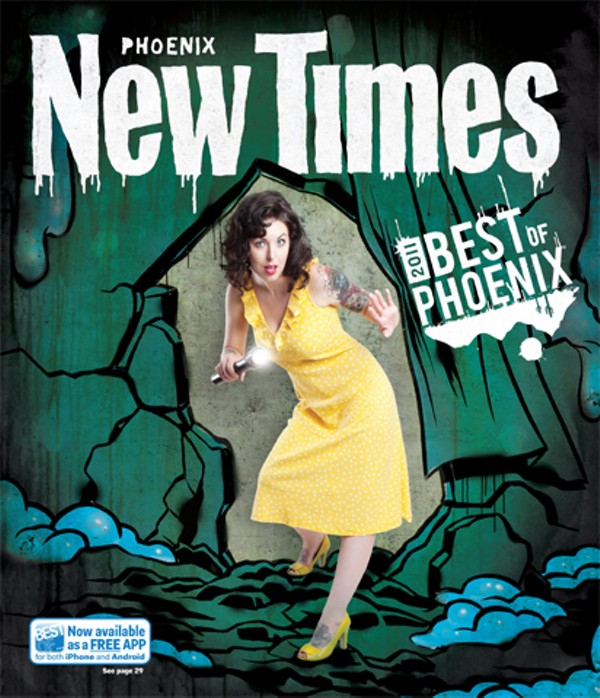Take a few (very) wrong turns and press a couple of wrong buttons, and you might end up down there — but don't expect to see anything good without a curator.
The basement's main hallway is piled high with books for the annual book sale and years' worth of display cases, forgotten mannequins, and shipping crates full of rare, and often ancient, artwork.
And behind a series of highly secured doors is what Heard Museum staff call the underbelly of the world-class museum of Native American art.
The museum built the underground facility in 1967, after Senator Barry Goldwater gave the museum his collection of kachina dolls. Decades later, the space is home to moving shelves full of historic baskets, textiles, paintings, and ceramics (all catalogued in the archive's yellowing, basement computer) from various discoveries and private donations of larger collections, including those of entrepreneur Fred Harvey and local real estate big hitter Russ Lyon.
Curators and staff are careful to note the museum's history of repatriating items to their communities, though a few items waiting to be transferred require special care and honoring of the original artist's customs and traditions. They also insist that there are no shrunken human heads in the archives (though a few locals remember seeing them on Boy Scout trips and museum visits decades ago, and others in a position to know claim the skulls are, or were, actually those of chimps).
A number of pieces at the Heard will never be showcased and even more are in the process of being packed up and sent home. Other than an upcoming exhibition of gold jewelry, we may never know what else lies behind the vaulted door in the curator zone, and if security and museum traditions get their way, we never will.
To see more photos of the Heard Museum's basement, visit www.phoenixnewtimes.com/bestof2011.







